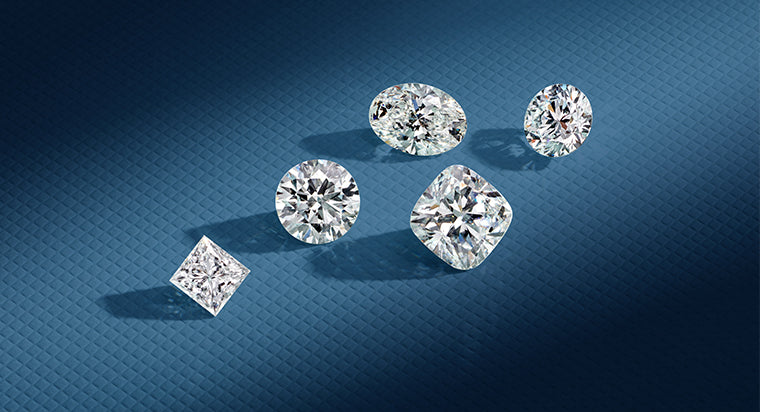
When it comes to jewelry, diamonds have long been the epitome of elegance and luxury. However, not everyone can afford the hefty price tag that comes with these sparkling gems. Fortunately, there’s a world of diamond substitutes out there that offer similar beauty and allure without breaking the bank. In this article, we’ll delve into the realm of diamond substitutes, exploring natural gemstones, lab-created alternatives, eco-friendly options, budget-friendly choices, and even some unique and exotic alternatives.
Table of Contents
Natural Gemstone Alternatives
Moissanite
Moissanite, originally discovered in meteorites, has gained popularity as a diamond alternative due to its brilliance and durability. Composed of silicon carbide, this gemstone offers exceptional fire and sparkle, often mistaken for diamonds. While it’s more affordable than diamonds, some purists argue that it lacks the cachet of natural diamonds.
White Sapphire
White sapphire, a variety of corundum, possesses remarkable hardness and clarity, making it an excellent substitute for diamonds in jewelry. Its colorless appearance and brilliance resemble that of diamonds, offering a sophisticated alternative for engagement rings and other adornments. However, white sapphires may lack the same level of sparkle as diamonds.
Cubic Zirconia (CZ)
Cubic zirconia, a synthetic material, has been a popular diamond simulant for decades. Its affordability and brilliance make it a go-to choice for budget-conscious consumers seeking diamond-like sparkle. While CZ may lack the durability of natural diamonds, it provides an accessible option for those looking to add glamour to their jewelry collection.
Lab-Created Alternatives
Lab-Created Diamonds
Lab-created diamonds, also known as synthetic diamonds, are grown in controlled laboratory environments using advanced technology that replicates the natural diamond-growing process. These diamonds have the same chemical composition and physical properties as natural diamonds, offering a sustainable and ethical alternative to mined diamonds. Additionally, lab-created diamonds often come at a lower price point, making them an attractive option for eco-conscious consumers.
Lab-Created Gemstones
In addition to diamonds, lab diamonds such as emeralds, rubies, and sapphires offer alternatives to their natural counterparts. These synthetic gems are chemically identical to natural gemstones but are created under controlled conditions in laboratories. Lab-created gemstones provide a sustainable and affordable option for those seeking vibrant and ethically sourced jewelry.
Eco-Friendly Alternatives
Recycled Diamonds
Recycled diamonds, also known as pre-owned or estate diamonds, are gemstones that have been previously used in jewelry and then repurposed for resale. By recycling diamonds, consumers can reduce the demand for new diamond mining, minimizing environmental impact and supporting ethical practices within the jewelry industry. Recycled diamonds offer the same quality and beauty as newly mined diamonds but with a lower environmental footprint.
Eco-Friendly Gemstones
Ethical sourcing and sustainability efforts are increasingly important considerations for today’s consumers. Many jewelry brands now offer eco-friendly gemstones that are sourced responsibly and support fair labor practices. From ethically mined diamonds to traceable colored gemstones, eco-friendly options provide peace of mind for environmentally conscious shoppers.
Budget-Friendly Options
Swarovski Crystals
Swarovski crystals, renowned for their precision-cut facets and brilliant sparkle, offer an affordable alternative to natural gemstones. These lead glass crystals come in a variety of colors and shapes, making them versatile additions to jewelry designs. While Swarovski crystals may not have the same durability as diamonds, they provide an accessible option for adding glamour to any outfit.
Glass and Crystal Alternatives
For those on a tight budget, glass and crystal alternatives offer inexpensive options for jewelry making. From glass beads to crystal rhinestones, these affordable materials allow crafters to create stunning pieces without breaking the bank. While glass and crystal may not have the same optical properties as natural gemstones, they can still add sparkle and style to any ensemble.
Unique and Exotic Alternatives
Black Diamonds
Black diamonds, also known as carbonado, are natural diamonds with a distinctive opaque black coloration. These unique gems offer a striking alternative to traditional white diamonds, making a bold statement in jewelry designs. While black diamonds may not exhibit the same sparkle as their colorless counterparts, their unconventional beauty appeals to those seeking something out of the ordinary.
Salt and Pepper Diamonds
Salt and pepper diamonds, characterized by their unique inclusions and speckled appearance, have surged in popularity in recent years. These natural diamonds feature a captivating mix of black and white inclusions, giving each stone a one-of-a-kind look. While salt and pepper diamonds may not have the same clarity as traditional diamonds, their organic charm adds a touch of intrigue to any piece of jewelry.
Conclusion
In conclusion, diamond substitutes offer a diverse array of options for consumers seeking alternatives to traditional diamonds. From natural gemstones to lab-created alternatives, eco-friendly options to budget-friendly choices, there’s a diamond substitute to suit every style and budget. Whether you’re drawn to the brilliance of moissanite, the ethical appeal of lab-created diamonds, or the unique allure of black diamonds, exploring these alternatives opens up a world of possibilities in the realm of jewelry design.



